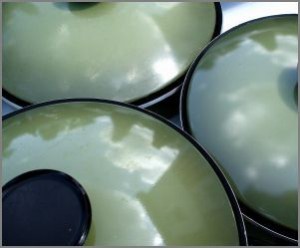Here are a few green living tips that I have been learning as of late…every little bit helps to becoming a better steward of the resources God has entrusted to us!
1. Turn your oven off ten to fifteen minutes before your cooking time runs out, as your food will continue to cook without even using the extra electricity!
2. Use your lids while cooking on the stove top with pots and pans. I always did not want hassle with the lids and getting them dirty and all (who wants extra dishes?), until I realized I can prevent an additional mess of splattered foods all over my stove top (which is harder to clean) by using the lids, as well as decreasing the cooking time. You can save electricity by simply keeping your pots covered while cooking!
3. For hard boiled eggs – bring your eggs and water to a boil and immediately turn the burner off, while leaving the lid on. Set your timer for 15 minutes and you will have hard boiled eggs without the use of so much electricity!

To add to your list, we use cast iron or stainless steel pots and pans (also with lids when we cook because it’s that much faster) as they distribute the heat more evenly.
Cast iron is known for it’s healthy non-stick cooking (we use olive oil when cooking) and you don’t have to worry about teflon flaking off into your food! (Cast iron is also known for putting iron in your diet…just from cooking with it!) I’m iron deficient so this works really well for me! As well with the cast iron you can purchase them at garage sales, etc all rusty without worry about the effects of the rust on your body. To clean them all you have to do is put them over an open fire and it will come clean! (after they’re clean initially you can cook with them as you do your other pots/pans and wash as normal)
When we cook with the oven we don’t worry about the “pre-heat oven to 400 degrees”, for example. We simply set the oven and put whatever it is that we’re cooking in the oven to cook. The food will start to cook as the oven is coming up to temperature and you will find you save on your electric bill as you don’t waste the first 10-15 minutes pre-heating your oven.
Just as a sidenote, any time you use your oven or stove top, we have found that food will continue to cook for more than 5 minutes after you turn off the burners, again saving you on your electric bill.
Microwaves, we have learned, are not a good way to re-heat leftovers due to health reasons (radioactivity, etc). We use our cast iron pans and re-heat our leftovers on the stove top. Yet another healthy alternative.
I love pot lids. Rarely cook without them. ; )
I’ve been enjoying what I’ve read from your site so far. It was encouraging to find other wife/mother people who share some of my ideals with whom I can connect.
I also plan to do alot of make ahead baking this winter, while the heat from the oven = lower heating costs (as opposed to in the summer when heat from the oven = higher cooling costs). I plan to make tortillas, muffins, biscuits, granola . . .etc. to use next summer.
I read once that you can bring water to a boil.. put your pasta in, put the lid on, then turn the stove off. It will cook in about the same time or maybe a bit longer.
Great tip!
Yes, this is how I make Tinkyada. I got this idea from the Energy-saving directions on the front of the package.
Also, the crockpot / slow cooker is extremely energy-efficient. A pressure cooker might be more energy-efficient than a regular pot, though, I think less energy-efficient than a crockpot.